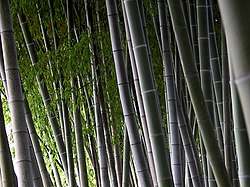Course:FRST270/Wiki Projects
You will create a wiki article to demonstrate (a) your ability to extract and summarize relevant information and (b) your capacity to rationalize and present logical arguments for further evolution or progress on some aspect of your case study.
Wiki Project Guidelines
I. Length
There is no word limit. Your Wiki Paper should be between 2,000 and 5,000 words in length (exclusive of references, maps, photographs, links to other open source content).
II. Purpose
Demonstrate (a) your ability to extract and summarize relevant information and (b) your capacity to rationalize and present logical arguments for further evolution or progress on some aspect of your case study.
III. Content
Content: each Wiki page should contain the following elements:
- III.1 A Title – include the name of the community/communities and the country.
- III.2 Summary in one paragraph
- III.3 Text of paper
- III.4 References cited
- III.5 Notes (if any)
- III.6 Figures, Maps and Tables (if any).
IV. Text of Paper
Headers for main sections will be provided on your Wiki page. You can add new sections.
- IV.1 Description of the community forestry case study – Where located; history; national or regional context (if appropriate)
- IV.2 Tenure arrangements. Describe the nature of the tenure: freehold or forest management agreement/arrangements, duration, etc.
- IV.3 Administrative arrangements. Describe the management authority and the reporting system.
- IV.4 Social actors (stakeholders, user groups) who are affected stakeholders, their main relevant objectives, and their relative power
- IV.5 Social actors (stakeholders, user groups) who are interested stakeholders, outside the community, their main relevant objectives, and their relative power
- IV.6 A discussion of the aims and intentions of the community forestry project and your assessment of relative successes or failures. You should also include a discussion of critical issues or conflicts in this community and how they are being managed
- IV.7 Your assessment of the relative power of each group of social actors, and how that power is being used
- IV.8 Your recommendations about this community forestry project
Note: Italic text if you are unable to find any information on one or more of these categories in your literature search, then say so. You can then write about this gap in section IV.8
V. References
- V.1 Please provide a full reference for every work cited anywhere in the paper in the ‘References Cited’ section at the end of the Wiki page.
- V.2 Provide a citation for every sentence, statement, thought, or bit of data not your own, giving the author, year, AND page.
Chosen Topics
Click on the link to your topic to begin editing:
- Community-based management of mangrove forests in Pred Nai village, Thailand
- Aspects of Community Forestry in Myanmar, Asia
- Waswanipi Cree- The Fight for Broadback Valley Forest Protection
- Conservation Contracts as a Recognition of Community Rights in the Maya Biosphere Reserve, Guatemala
- The relationships among government, environmental and community stakeholders in a Panda reserve area, City of Yaan, China
- Non-Timber Forest Products as a Local Enterprise: A Case Study of Work with Brazil Nut Producer Associations in Madre de Dios, Peru
- Stakeholder Conflicts in Victoria Park, Hong Kong
- Bamboo Forest management by the Bunun People in Yan Ping Township, Taiwan
- Industrial and community forest management of Torreya Grandis in Zhejiang Province, China
- The Indigenous versus the modern natural resources management system in Oued Sbahiya watershed, Northern Tunisia
- Mining activities management between the Toliara Sands Project and the Mikea forest in Madagascar
- Conservation and Indigenous People in Kahuzi-Biega National Park in the Democratic Republic of Congo
- Course:FRST270/Wiki Projects/Bewilderment in the Harapan Rainforest of Jambi Province, Indonesia: The Struggle For Land Amongst Stakeholders
- Aveda Corporation and Yawanawá community in Acre, Brazil: A partnership in sustainable rain forest based enterprises
- Collaborative forest management in relation to recreation in the District of North Vancouver
- The Páramo, global carbon markets, and community forestry gone awry: The case of the Mojandita Pine Plantation
- UZACHI, a Community Forestry initiative in Oaxaca, Mexico
- Attempts at co-management in Klamath Basin, on the border of California and Oregon, USA
- Icewine industry and management in the Niagara Peninsula, Canada
- Community-Based Fisheries Management Between Government and Village Communities in Vanuatu
- Community based mangrove management in Demak District, Java, Indonesia
- Co-management between the government, outdoors clubs and the forestry company in the creation of the Valhalla Provincial Park in British Columbia, Canada
- The Inuvialuit Agreement and collaborative management in the Western Arctic, Canada
- City of Vancouver drug problems in public parks
- Power and Politics of Natural Resource Management Within Flood-Prone Communities of Khyber Pakhtunkhwa Pakistan
- Community forest management in Xixi National Wetland Park, Hangzhou, China
- Co-managment between Red Dog Mine and the Government, in the operation of zinc mining in northwest Alaska, Kotzebue
- Cheakamus Community Forest in Whistler, British Columbia
- Rural Nepal's Community Forestry: The Impacts of Policies on Marginalized Groups
- The evolution of the Uma’Jalan people's cultivation practices in East Kalimantan, Indonesia
- Sustainable forest management of the Model Forests in Cameroon
- Community forestry and park management in Fiji
- Water Rights in North India's Jammur and Kashmir State, India
- Community forestry in Clayoquot Sound, British Columbia
- Communities, property rights and forest management in Palawan, Philippines
- Community Forest Management in Dozam, Bhutan
- Community Forestry in South Korea
- Communities and forest management of maple syrup in Quebec, Canada
- Achieving Rural Development While Protecting Local Livelihoods in Sindhupalchok, Nepal
- Livelihood Issues in the communities surrounding the Nature Reserves in Guangxi, China
- Community-based co-management projects in Gansu Baishuijiang National Natural Reserve in China
- Harnessing Ecosystem Services of the tea forests in YunNan, China
- Community Forests in the Cordillera region of The Philippines
- The role of Community Forestry in Bosnia and Herzegovina during the socialist era
- The Land Question and contemporary forest management of the Nisga'a Lisims Government
- An examination of the power politics between stakeholders and Aboriginal people involved in the forestry industry in Tasmania, Australia
- Co-Management of Fisheries and Land-based Resources by the Tahltan First Nation in Northwestern British Columbia
- Collaborative management of the Nandi forests in Kenya's Rift Valley
- Modern conservation efforts threat the livelihood of the Dukkha tribe in the Larch Forests of Northern Mongolia
- Community-based mangrove forest management in villages in the Sundarbans Bangladesh
- Community Forestry in the province of Central Java, Indonesia
- Socio Bosque Program: Communitarian vs Individual Challenges and Benefits for Ecosystem Conservation Combined with Poverty Allleviation in Ecuador
- Challenges faced on land and sea by the Saami People of Norway
- Impacts of multi-level governance on community forestry in the Mixteca region of Oaxaca
- The threats posed by a Rio Tinto mine for Madagascar forest communities
- Collaborative management of the Mersey forest in north west England
- Community Forestry in Gwaii Haanas: A Leading Example in Canada's Co-Managed Forests
- Munduruku Indigenous People versus forest concessions in the Tapajós region, Para state, Brazil
- Logging Management on New Brunswick's Crown Land
- Co-Management with Indigenous Tharu Communities in the Buffer Zones of Royal Chitwan National Park, Nepal
- Potato reserves management and sustainable forestry in Prince Edward Island, Canada
- Community forestry in East Java, Indonesia
- The transition of Taiyuan City, from one of the world's top 10 most polluted cities to a leading greenist city in China
- Community Forestry Management Strategies in Wenshan National Nature Reserve, China
Samples & Case Studies
Here is a sample wiki page that you can use as a guide for formatting:
Here is a template for a case study:
Here is the Open Case Studies Site:
Formatting Help

|

|

|

| |
|---|---|---|---|---|
|
Using Images on the Wiki
Images: Please be aware of the copyright status of materials you are going to post on the internet. Here are a few places where you can find public domain, Creative Commons free to use, Creative Commons free to reuse-type of images:
- Wikimedia Commons. Please check licensing status of each image you are going to use.
- Flickr Advanced Search. Remember to click the 'bullet' where filter the search to limit content with Creative Commons-licensed content.
- Google Advanced Image Search. Again, click the 'bullet' to limit your search to only images labeled for reuse.
Adding images to your wiki project:
- Find the image you like
- Make sure you have the proper license before you use it
- Embed the image on your wiki page
- If needed to, upload the image to UBC Wiki
- Name your images with the following file name structure: FRST270_Project_ABC.jpg
- Make sure you put the original source of the image
- Make sure you have the proper license (eg Creative Commons) to use the image
- Link the image to your wiki page
Editing tips:
Click here to get help on adding images and pictures on wiki pages.
Sharing Your Work
All wiki project pages have a template on them that allows you to add your name to the resource and indicate if you'd like to share your work via a Creative Commons license. If you would like add a name for who or what project created the resource, add that info after the names parameters. If left blank, it will default to Course:FRST270. If you would like your resource to be reused, add a yes to the share parameter. This will add a Creative Commons license to the resource. If left black or no, no statement about licensing will be added to the project box.
{{Projectbox FRST270
|names=Will
|share=yes
}}
| This conservation resource was created by Will. It is shared under a CC-BY 4.0 International License. |
Using no or negative parameters
{{Projectbox FRST270
|names=
|share=no
}}
| This conservation resource was created by Course:FRST270. |
Emails
Emails
- wiki.support@ubc.ca
- felicia.tjeng at ubc.ca
- will.engle at ubc.ca
- sally.taylor at ubc.ca - Librarian

